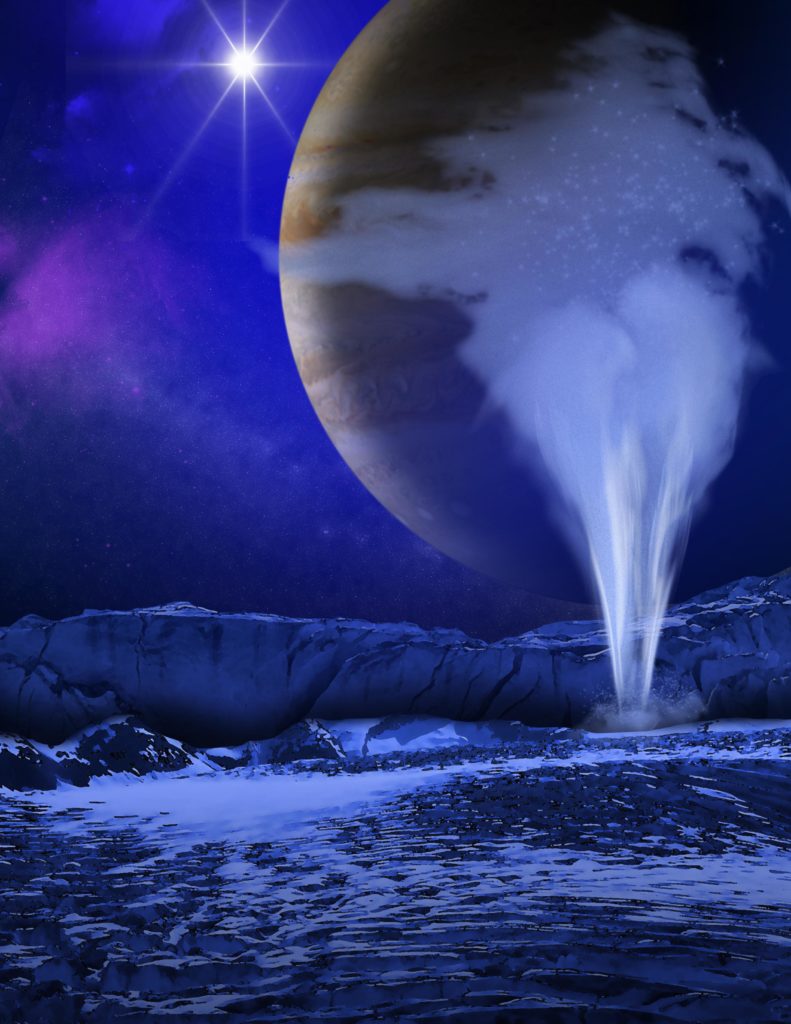All life on Earth survives because of the sun. Plants use a process called photosynthesis to transfer energy from the Sun’s rays into the sugars that build their stems and leaves. Animals either eat the plants directly, or eat other animals that have eaten plants. Countless other organisms, like bacteria, algae, and fungi, rely on similar processes to survive. In fact, Earth’s position in our solar system, and its distance from the Sun, is what makes its environment so suitable to life. It’s neither too warm nor too cold; neither too bright nor too dim.
Our Sun is a star, and is one of many stars in the universe. What’s even more amazing is that in recent decades, astronomers have used modern technology to detect all sorts of planets around other stars! These scientists, whose job it is to search for life in the universe, have concluded that life may only be possible on planets with Earth-like characteristics that are a similar distance away from a star – their sun.
However, examples of life forms on Earth living in extreme environments suggest that life may be able to survive under conditions previously thought to be too hostile for life.
There are areas on Earth that do not receive any sunlight at all. Those dark caverns make great places for understanding how life survives without the sun’s energy. Bacteria in deep underground mines have found ways to thrive off of the nutrients in the soil using heat from the ground. In deep ocean environments, bacteria live in total darkness and are nourished by chemicals that come out of hydrothermal vents, which are like underwater volcanoes!
A recent scientific discovery found that two miles beneath the Earth’s surface, in an African mine, a species of bacteria consumes hydrogen formed by particles emitted by radioactive Uranium, Thorium, and Potassium. Organisms like this are not common. Most life on Earth is harmed by exposure to that type of radiation, which is called ionizing radiation. Ionizing radiation can damage DNA and cause illness or death. The sun, by comparison, is much weaker than radioactive metals. Despite these risks, exposure to ionizing radiation can enable some organisms to develop the ability to survive and even flourish under these conditions using a process called radiolysis.
One way that living things resist damage from radiation is by absorbing it using a chemical called melanin. Your body produces melanin as well – it is found in your skin cells and helps to prevent sunburn. People with darker skin have larger amounts of melanin and are less likely to get sunburned. When certain organisms are exposed to large amounts of ionizing radiation, melanins can help them convert that energy into food. For example, several types of fungi found in Arctic and Antarctic regions and the Evolution Canyon in Israel contain more melanin than other species and grow faster when exposed to ionizing radiation.
Laboratory experiments have shown that when ionizing radiation interacts with ice, particles are produced that can support life. This means that it is theoretically possible for life to form on distant, icy bodies in space such as Jupiter’s moon, Europa.
A recent research paper has demonstrated a few ways that life elsewhere in the universe could use Galactic cosmic rays (GCRs) as a life-giving energy source. The scientists used mathematical equations to make very close estimations about how this might work.
Galactic cosmic rays are an extremely high energy type of ionizing radiation that exist in outer space. Our atmosphere serves as an insulating shield between us and the damaging effects of cosmic rays. However, if a planet does not have an atmosphere to break up the impact of cosmic rays, the rays will be able to directly strike the planet’s surface and travel underground. However, as the rays pass through the surface of the planet, they lose a huge portion of their harmful energy. As the rays progress deeper and become less harmful, this energy can also be used directly by specialized life forms to produce food.
How does this work? Scientists know that cosmic rays strike Earth’s atmosphere and explode in a shower of unstable particles, which then quickly break down into smaller particles. These particles are similar to the ones that the underground bacteria eat in the African mine. Life on other planets could very well do the same thing!
A second way for cosmic rays to permit life is through a process called “organic synthesis.” Organic synthesis is when biological molecules, the kind living things are made of, are formed. Scientists call these molecules “organic.” When cosmic rays strike an icy surface, they set off many chemical reactions, producing organic molecules.
A third way for cosmic rays to support life is through the direct capture of ionizing radiation. As we learned from the discovery in the African mine, life can form melanins to protect itself from the harmful effects of this high-energy radiation. Those melanins can help the organisms capture the ionizing radiation and use it directly as life-giving energy.
Since we exist, we know that life forms on Earth and under Earth-like conditions. To continue to explore the beauty and mystery of life, it is worth considering the possibility of other conditions that allow life to flourish. Even on Earth, there are organisms that have formed in the most unlikely of circumstances; away from water, oxygen, and sunlight, in very high temperatures, under high pressure, and even while being hit with radiation. If it’s possible for life to form in such harsh environments on Earth, perhaps there is an otherwise inhospitable planet teeming with forms of life we have not yet imagined.
Are you the author of this article? We had a site crash back in 2016 and lost some author attributions. We promise this is not a snub! Please email us and let us know that this is your post. Thanks and apologies!


